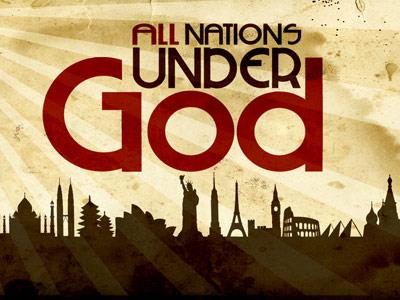-
Show Your True Colors: Raise Your Flag
Contributed by Larry Brincefield on Jun 30, 2004 (message contributor)
Summary: I spend a lot of time talking about the picture of the marines raising the flag on Iwo Jima during WW2, history’s most reproduced photograph. And then talk about the importance of raising the flag of our faith.
Sermon preached by Pastor Larry C. Brincefield on July 4, 2004
Title: Show Your True Colors: Raise Your Flag or “Raising the Flag of Faith”
Text: Matthew 5:16
Introduction
1. Vexillology is the study of flags…
• I don’t know about you…but that’s a new word for me…
• I learned it this week while preparing for this sermon.
• Vexillology is derived from the Latin word vexillum,
• a term used by the Romans to refer to a piece of fabric hung from a horizontal crossbar on a pole. (show picure)
• That seems to be one of the earlier references to flags in history…
• Today, flags are very common.
• Every country has a country flag…
• Every state in our country has a state flag…
• Families even design their own family flags.
• Some flags are decorative with fancy designs or pictures…
• Others have special meaning, like our American flag.
• Recently, many people have been putting the flag at half-staff—honoring the death of President Reagan.
• Patriotism seems high right now…
• We the continued fighting in Iraq and Afghanistan.
• We have flags on decals that we put on our cars…
• We have flags printed in our newspaper…
• We even have flags on our clothing…
• In fact, the tie I’m wearing this morning has the colors of the flag in it.
2. Raising a flag is our way of showing what we stand for…
• When we raise the American flag…
• It is showing support for America…
• It is saying, “I’m proud to be an American”.
• It is a way to “show our true colors”.
• This morning, I encourage you to “show your true colors: raise your flag”
Read Text: Matthew 5:16
Body
1. Raising the flag at Iwo Jima
A. This picture is the most reproduced photograph in history. Let me tell you the story behind the picture.
• This small island, smaller than Manhattan...
• Was very strategic..
• It was Japanese soil…
• located mid-way between Japan and American bomber bases in the Marianas Islands.
• No foreign army had ever occupied Japanese territory in 5,000 years.
• We were able to hit Japan with long range bombers…
• But the short range fighters that protected the bombers didn’t have long enough range to protect the bombers as they flew over Japan…
• As a result, Japanese fighter planes were able to attack our bombers pretty much unchecked.
• Iwo Jima had 3 airfields…
• And being able to use this island as a stopover point was essential.
• The Japanese knew of the strategic nature of this island…
• And their plan was to make it too costly in the terms of human lives for the Americans to take
• The Japanese had built 1,500 rooms underground…
• Connected by 16 miles of tunnels!
• The Japanese strategy called for “no Japanese survivors”…they planned not to survive…
• They planned for each Japanese soldier to kill 10 American soldiers.
• The US Airforce pounded Iwo Jima with the longest sustained aerial offensive of WW2.
• But because of the underground rooms and tunnels…
• The bombing had little effect.
• 22,000 Japanese soldiers were underground…
• Prepared to die to protect Japanese soil from being invaded.
• The US sent more Marines to Iwo Jima than to any other battle,
• 110,000 Marines in 880 Ships.
• The convoy of 880 US Ships sailed from Hawaii to Iwo Jima in 40 days.
• After the Navy pounded the Island…
• The marines landed…
• But they were unable to dig foxholes in the loose volcanic ash…
• They were sitting ducks for the hidden Japanese gunners.
• The battle was very unique….
• One hundred thousand men fighting on a tiny island
• for 36 days Iwo Jima was one of the most populated 7.5 miles on earth.
• The marines had to fight for every inch of land…
• Suffering high casualties…
• With the Japanese soldiers fighting from below ground…
• The Americans rarely even saw their enemy.
• Easy Company…the company that raised the flag in this famous photograph had a 75% casualty rate.
• In 36 days of fighting there were 25,851 US casualties (1 in 3 were killed or wounded).
• Of these, 6,825 American boys were killed.
• Virtually all 22,000 Japanese perished.
• More US Marines earned the Medal of Honor on Iwo Jima than in any other battle in US History.
• The Marines’ effort provided a vital link in the U.S.chain of bomber bases.
• By war’s end, 2,400 B-29 bombers carrying 27,000 crewman had made emergency landings on Iwo Jima.
• At the time that Easy Company raised the flag…
• The fighting had gone on for 4 days…

 Sermon Central
Sermon Central



